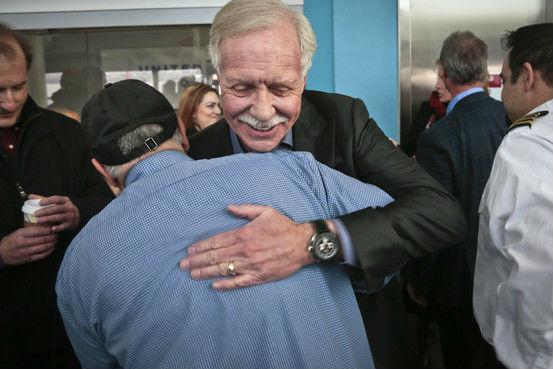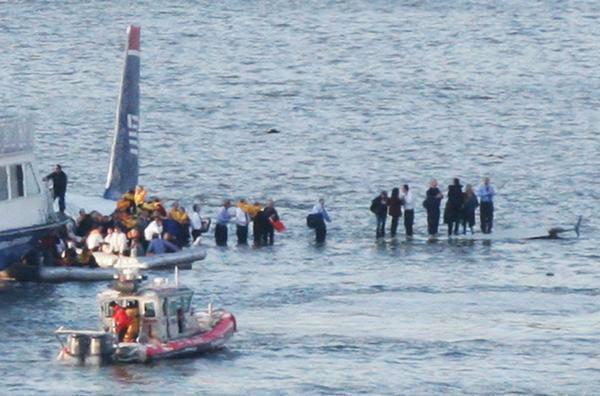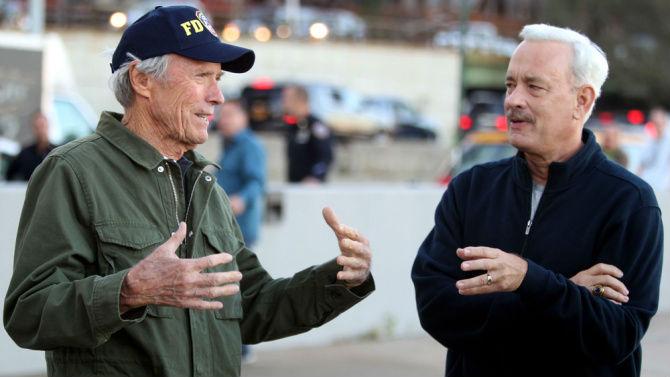Real-Life accident investigators object to portrayal in 'Sully' movie as 'Gestapo'
The accident happened in 2009 with no loss of life and only minor injuries

Your support helps us to tell the story
From reproductive rights to climate change to Big Tech, The Independent is on the ground when the story is developing. Whether it's investigating the financials of Elon Musk's pro-Trump PAC or producing our latest documentary, 'The A Word', which shines a light on the American women fighting for reproductive rights, we know how important it is to parse out the facts from the messaging.
At such a critical moment in US history, we need reporters on the ground. Your donation allows us to keep sending journalists to speak to both sides of the story.
The Independent is trusted by Americans across the entire political spectrum. And unlike many other quality news outlets, we choose not to lock Americans out of our reporting and analysis with paywalls. We believe quality journalism should be available to everyone, paid for by those who can afford it.
Your support makes all the difference.One of the problems of making movies about events in the recent past is that many of the real-life people can complain about their portrayal. That is what happened over the way the CIA station chief in Libya was presented to the public in 13 Hours: The Secret Soldiers of Benghazi.
Now, real-life crash investigators have blasted the way they were shown in Clinton Eastwood’s film Sully, which stars Tom Hanks and which opens in the US on Friday.
The Associated Press said that the film about a 2009 accident when US Airways Flight 1549 was ditched in the Hudson River shortly after take off, has created consternation from investigators are made to look bad. In reality, the investigators gave Captain Chesley “Sully" Sullenberger high marks in their accident report and credited his quick action that saved lives.

“We're not the KGB. We're not the Gestapo,” said Robert Benzon, who led the National Transportation Safety Board's (NTSB) investigation. “We’re the guys with the white hats on.“
The film portrays investigators as more like prosecutors looking for any excuse to blame Mr Sullenberger for the mishap. They demand to know could the plane have made it to LaGuardia Airport if Mr Sullenberger, portrayed by Hanks, had turned it around?
Did the thrust in both engines quit after the plane struck a flock of geese or was there still some power in one?
Thirty-five safety recommendations were ultimately issued as a result of the Flight 1549 investigation.
“The NTSB concludes that the captain’s decision to ditch on the Hudson River rather than attempting to land at an airport provided the highest probability that the accident would be survivable,” the report concluded.
The AP said that investigators recalled Mr Sullenberger and co-pilot Jeff Skiles, portrayed by actor Aaron Eckhart, as comfortable and cooperative. Pilot union officials representing them were present during all the interviews and at later public forums.

“These guys were already national heroes,” said Mr Benzon, who is now retired. “We weren't out to embarrass anybody at all.”
But that's not how it comes across in the film, directed by Clint Eastwood.
“Until I read the script, I didn’t know the investigative board was trying to paint the picture that he (Sullenberger) had done the wrong thing. They were kind of railroading him into ‘it was his fault’,” Eastwood said in a publicity video for the Warner Bros film.
Hanks said that a draft script included the names of real-life NTSB officials, but Mr Sullenberger - who is an adviser on the film - requested they be taken out.
“He said, ‘These are people who are not prosecutors. They are doing a very important job, and if, for editorial purposes, we want to make it more of a prosecutorial process, it ain't fair to them’,” said Hanks. “That’s an easy thing to change.”
Malcolm Brenner, a human factors expert who was among the investigators who interviewed Mr Sullenberger the day after the ditching, said he recalls being extraordinarily impressed at the time with both pilots and how well they worked together in the midst of the crisis. He said he's also been impressed since then with how Ms Sullenberger has used his fame to promote aviation safety.
Tom Haueter, who was the NTSB's head of major accident investigations at the time and is now a consultant, said he fears the movie will discourage pilots and others from fully cooperating with the board in the future.
“There is a very good chance,” said Mr Haueter, “that there is a segment of the population that will take this as proof of government incompetence and it will make things worse.”
Despite frigid temperatures and damage to the plane’s undercarriage, only five of the 155 people aboard suffered serious injuries. No one died. Mr Sullenberger, known instantly across the country by his nickname Sully, became an icon.
The studio released a statement from Mr Sullenberger saying: “The story being told came from my experiences, and reflects the many challenges that I faced and successfully overcame both during and after the flight. I was involved in the development and am thrilled it’s being brought to the screen.”
The movie was based on Sullenberger’s 2009 book “Highest Duty: My Search for What Really Matters,” Bloomberg News said. Mr Sullenberger, now a motivational speaker, is promoting the movie on his website and the studio is promoting his book on the movie’s websit
Join our commenting forum
Join thought-provoking conversations, follow other Independent readers and see their replies
Comments